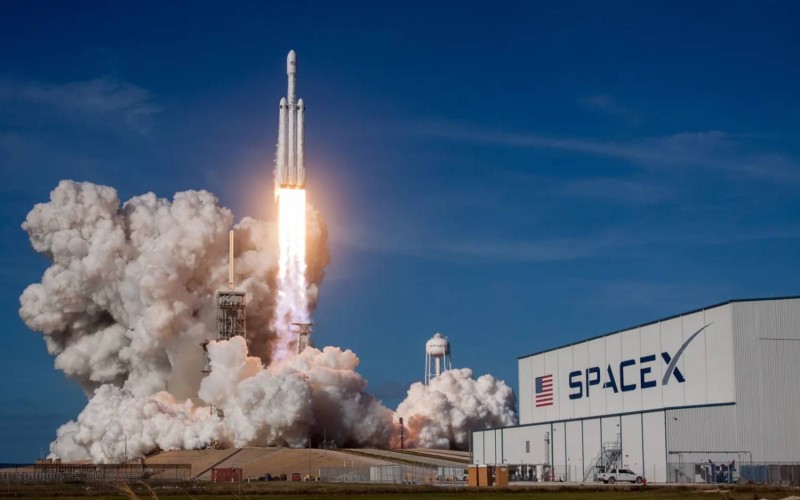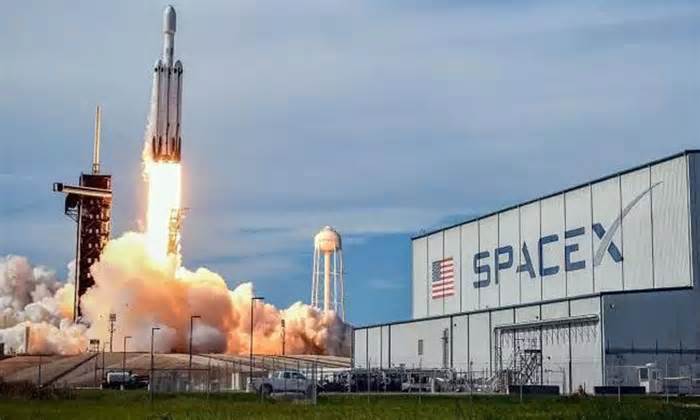
Starship preparations as rollouts begin ahead of full...
- by NASASpaceFlight.com
- Nov 12, 2024
- 0 Comments
- 0 Likes Flag 0 Of 5

— Chris Bergin – NSF (@NASASpaceflight) November 9, 2024
If SpaceX continues with the same pairings, Booster 14 should be the next booster to launch after Flight 6. It successfully received its cryogenic proof test on Oct. 4 and 5, and it is now in Mega Bay 1, acquiring its 33 engines that will take Ship 33 to space on Flight 7.
At the production site in Mega Bay 1, Booster 12 received a small amount of repair work after its successful catch on Oct. 13. The engine shielding has been removed, and the chine piece that fell off during landing has been repaired. Booster 12 was then moved out to the rocket garden on Oct. 28, where it will likely stay a showpiece for a long time, just like Falcon 9 Booster B1019 outside of Hawthorne in California.
Booster 12 resides in the rocket garden after successful catch. (Credit: BocaChicaGal/Mary for NSF/L2)
Booster 16 has also begun stacking inside Mega Bay 1. The first two Liquid Oxygen tank sections were seen entering on Oct. 15, with a barrel section following on Oct. 30 and another following on Nov. 6. This will likely be Flight 9’s booster.
Mega Bay 2 is receiving brand-new permanent work stands. These new stands will give workers more access to the ship without having to build scaffolding around each ship that needs work every time. Ship 34’s center transfer tube was also seen heading into Mega Bay 2 for installation.
The Starfactory is nearing completion, with the connection to the office building’s roof being constructed and its glass windows going up. The Starfactory production line is alive and well, with two nosecones and Ship 37’s header tank being seen through the window, getting completed in the assembly line.
Connection between Starfactory and the office building. (Credit BocaChicaGal/Mary for NSF/L2)
Sanchez Site
A lot is happening at the Sanchez site, with work on the tower two chopsticks continuing and orbital launch mount (OLM) two beginning to come together. The chopsticks and chopstick carriage system have been getting pieced together for the last few weeks now. They are now receiving reinforcements on the joints, which are being welded to help hold the entire weight of Superheavy.
The second OLM is being prepared at the Sanchez site before it is rolled out to Pad B. This OLM is nothing like the first one, taking a square shape instead of a circular one. Three main sections need to be put together and then stacked. The first lowest section is the square frame. Not much is known about what will go in this section or if it will just be used as the base of the rest of the OLM.
The following section is where the 20 hold-down clamps will be housed. This area has corner and middle pieces that create a circular shape into which the booster can sit. Then, the top-level looks to be a water-cooled barrier, keeping the systems safe from the power of the 33 Raptor engines.
These pieces are all being put together at the Sanchez site and will likely be rolled out on a self-propelled modular transporter (SPMT) and taken to the launch site when ready.
New orbital launch mount two getting built at the Sanchez site. (Credit Jack Beyer for NSF/L2)
Launch Site
Heading to the launch site, Pad B is starting to take shape. The flame trench has been dug about five meters into the ground. Although it is unknown how deep SpaceX will dig, it could be around three to four times what has already been accomplished. The area next to the trench where the water and cryogenic propellant lines will go now also has a concrete base.
Tower Two had its safety nets removed, which were used to keep people safe from falling equipment while the main tower sections were being attached. The new tower is also planned to receive a ship-quick disconnect similar to the one built for Tower One. The C8800-1 crane has been completely dismantled and is being taken away from the launch site after completion of the tower in August.
The beginning of Pad B’s flame diverter trench. (Credit: Jack Beyer for NSF/L2)
New 500 and 600-millimeter diameter cryogenic pipes were delivered to the launch site. These pipes are expected to be used on at least three new larger sub-coolers. This system is expected to be dedicated to Pad B, allowing both Pad A and Pad B to have cryogenic cooling capabilities whenever needed.
Moving over to Pad A, the OLM has received more work hours to prepare it for the upcoming launch. The hold-down clamps have been calibrated, and work on the ship quick disconnect has been completed. Tests on the chopstick arms and landing rails have also been completed to better prepare it for the next catch attempt, which is coming soon, on Nov. 18.
Please first to comment
Related Post
SpaceX to launch India’s GSAT satellite
- Nov 17, 2024
Stay Connected
Tweets by elonmuskTo get the latest tweets please make sure you are logged in on X on this browser.
Sponsored
Popular Post
Tesla: Buy This Dip, Energy Growth And Margin Recovery Are Vastly Underappreciated
28 ViewsJul 29 ,2024






 Energy
Energy


















